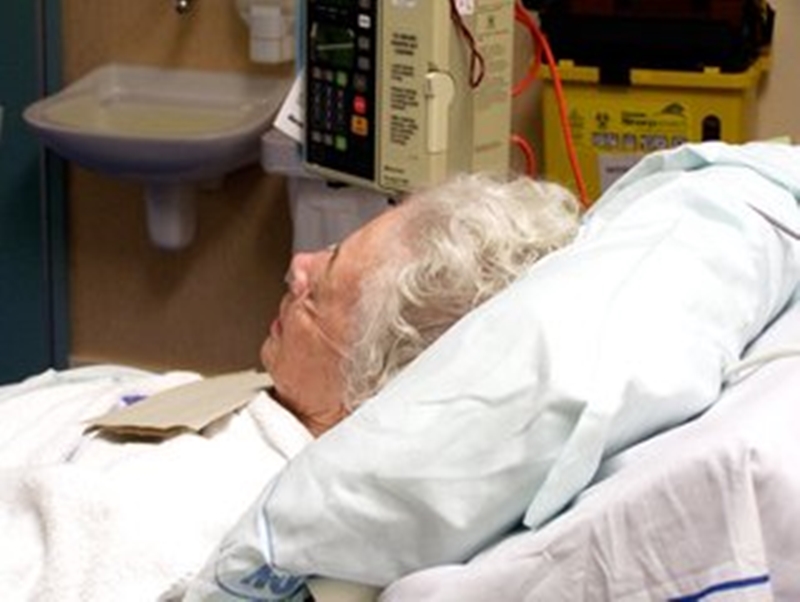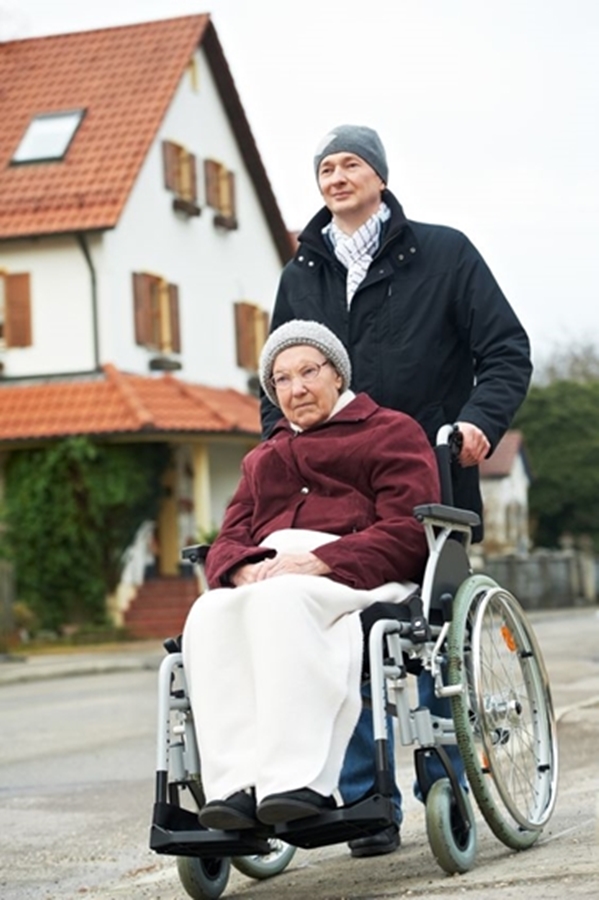One of the most difficult aspects of caring for someone with limited movement is getting them comfortable in bed; at least, it is for me. When I lie down at night, I know it takes a few moves here and there just to find that right position of comfort that allows me to settle into sleep—that sweet spot. However, when you are responsible for helping someone else find their “sweet spot,” you don’t have the benefit of “feeling” for just that right point of pressure and relaxation; so how do you help them get comfortable? Here are some things I do to help Lynn be comfortable in bed.
I use lots and lots of pillows to help me position him. He has gastric reflux, so I have a wedge pillow under the top of his mattress to elevate his head. Unfortunately, that can cause his head to be slightly pushed into his chest, so I have a pillow to put under his head that is designed to give more neck support, and it allows his head to fall back over a slightly elevated fold. By lying back over the fold, it raises his chin off his chest allowing him to get a better airway and creating less pressure on his neck muscles.
I also use pillows under his knees. I actually use two thin pillows under his knees and position them so that they support both his thighs and his knees. That helps to reduce the pressure under his lower back, which seems to help if he is lying on his back for very long.
If I need to roll him over, I bend the leg that is closest to the side of the direction in which I’m moving him, reach to the shoulder that needs to end up “on top,” and roll his body either toward me or away from me to achieve the desired direction. I have a wedge pillow to put under his side that allows him to roll back slightly and rest on the wedge, or I double over a pillow and use it like a wedge. Then, I keep both the top and lower leg slightly and put a pillow between the legs so the bones aren’t resting on each other (one between the ankles may also be necessary). When on his side, a pillow to support his upper arm also helps. The biggest challenge to resting him on his side is the lower arm. Sometimes, it helps to have him slightly leaning back on the pillows, and I use a towel under his hips to move them slightly forward so he’s not completely lying on that side. Positioning on his side takes a lot of communication between us to determine how to best support those body parts hanging in the air and how to keep the pressure off all those bones, taking all the weight in that position.
Since Lynn has so much spasticity in his arms and legs, one of the most important devices I use for his comfort is a “boot” for his foot. I have a contractor boot that I sit his foot into and then secure with Velcro straps. The boot is cushioned with fleece, so his bones are comfortable. This device really helps support his feet and helps prevent cramping. I’ve found it also helps if I wrap the boot in an ace bandage so that the toes are pulled slightly up toward the body. What I do is wrap the ace bandage around the top of the boot about three times to anchor it, and then I do a figure “8” wrap, pulling tighter on the wrap that crosses below the toes to pull up toward the ankle.
I occasionally also use handkerchiefs to keep his hands from rubbing against his skin if his shirt is off. I use hand towels or wash cloths to various places to keep skin from rubbing against skin. Everyone is different; however, so experimentation is the way to go. Hopefully, some of these ideas will inspire you to come up with ways to help make the person you are caring for a bit more comfortable, too.
This article originally appeared on Multiplesclerosis.Net by Health-Union, LLC, and has been reposted with permission.



